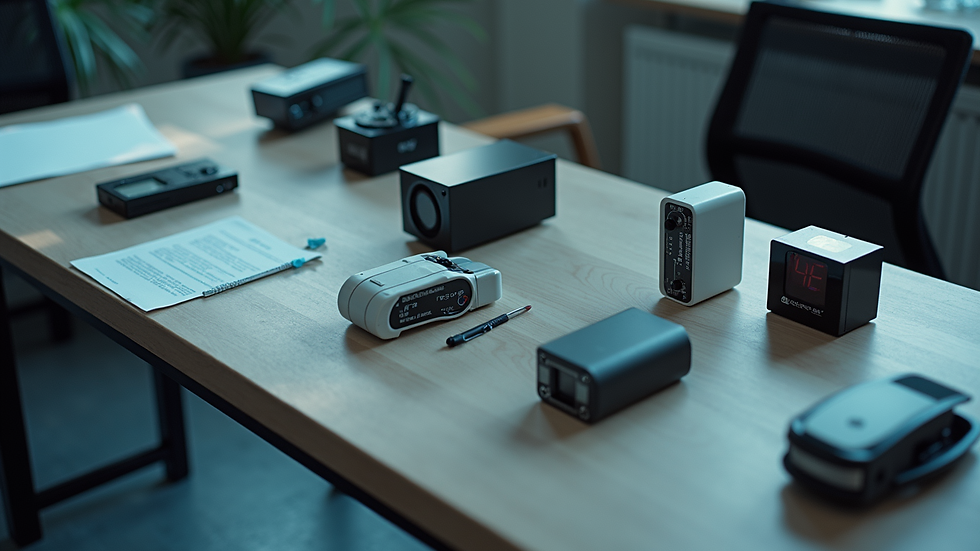How Continuous Glucose Monitors Improve Your Health: Three Benefits of CGMs
- Dr Paul Kolodzik

- Aug 22
- 4 min read
Managing blood sugar levels is crucial for many people, especially those with diabetes or prediabetes. Traditional methods like finger-prick tests provide snapshots of glucose levels but can miss important fluctuations throughout the day. This is where continuous glucose monitors (CGMs) come in. These devices offer real-time insights into glucose trends, helping users make informed decisions about their health. In this article, we will explore the benefits of CGMs, how they work, their costs, and practical tips for maximizing their use.
Understanding the Benefits of CGMs
Continuous glucose monitors provide several advantages over traditional glucose testing methods. Here are some key benefits:
Real-time glucose tracking: CGMs measure glucose levels continuously, usually every 5 to 15 minutes. This allows users to see how their glucose changes throughout the day and night.
Better glucose control: By understanding glucose trends, users can adjust their diet, exercise, and medication to maintain more stable blood sugar levels.
Reduced finger pricks: CGMs reduce the need for frequent finger-stick tests, making glucose monitoring less painful and more convenient.
Early detection of highs and lows: Alerts from CGMs notify users of dangerous glucose spikes or drops, helping prevent emergencies like hypoglycemia.
Improved lifestyle choices: Data from CGMs can motivate healthier eating and activity habits by showing the immediate impact of different foods and behaviors.
For example, someone using a CGM might notice that a certain snack causes a sharp glucose spike. With this knowledge, they can choose alternatives that keep their levels steadier. This personalized feedback is invaluable for long-term health management.

How Continuous Glucose Monitors Work
A continuous glucose monitor consists of three main components:
Sensor: A small, flexible sensor is inserted just under the skin, usually on the abdomen or arm. It measures glucose levels in the interstitial fluid.
Transmitter: This device sends glucose data wirelessly from the sensor to a receiver or smartphone app.
Receiver or app: The user views glucose readings and trends on a dedicated device or mobile app.
The sensor continuously measures glucose levels and sends data every few minutes. This constant stream of information provides a detailed picture of glucose fluctuations, unlike traditional tests that only show a single moment in time.
Users can set alerts for high or low glucose levels, allowing them to take action before symptoms develop. Many CGMs also offer data sharing options, enabling caregivers or healthcare providers to monitor glucose remotely.

How much does a CGM cost?
The cost of a continuous glucose monitor can vary widely depending on the brand, features, and insurance coverage. Here are some factors to consider:
Initial device cost: The receiver or reader device may cost between $200 and $500.
Sensors: Sensors typically need to be replaced every 7 to 14 days. Each sensor can cost $35 to $100. Our one-month supply of CGMs cost $99.
Insurance coverage: Many insurance plans vary. Consult with your insurance to see if a CGM is covered.
Additional supplies: Some systems require adhesives or other accessories, which add to the cost.

Practical Tips for Using a Continuous Glucose Monitor Effectively
To get the most out of a CGM, consider these actionable recommendations:
Calibrate if needed: Some CGMs require occasional finger-stick calibrations. Follow the manufacturer’s instructions carefully.
Keep the sensor site clean and dry: Proper skin care helps sensors stay in place and function accurately.
Review data regularly: Spend time each day reviewing glucose trends to identify patterns and triggers.
Use alerts wisely: Set personalized high and low glucose alerts to stay informed without causing alert fatigue.
Share data with your healthcare team: Regularly discuss your CGM data with your doctor to optimize your treatment plan.
Combine with lifestyle changes: Use CGM insights to adjust your diet, exercise, and medication for better glucose control.
By integrating CGM data into daily routines, users can make informed decisions that improve their overall health and quality of life.
The Future of Glucose Monitoring and Health Management
Continuous glucose monitors are transforming how people manage their health. Advances in technology are making CGMs smaller, more accurate, and easier to use. Integration with smartphones and wearable devices is enhancing convenience and data accessibility.
Looking ahead, CGMs may become standard tools not only for people with diabetes but also for those interested in optimizing metabolic health. Real-time glucose data can help prevent chronic diseases by encouraging healthier habits and early interventions.
If you want to explore more about how a continuous glucose monitor can improve your health, consider consulting with a healthcare professional who specializes in metabolic health. They can help you choose the right device and develop a personalized plan.
Embracing this technology offers a proactive approach to managing blood sugar and overall wellness.
By understanding the benefits of CGMs and how to use them effectively, you can take control of your health with confidence. Continuous glucose monitoring is more than just a tool - it is a pathway to better living.




Comments